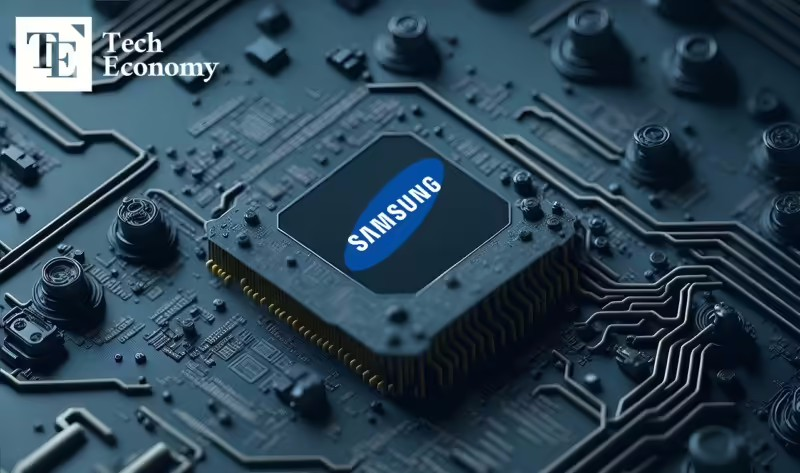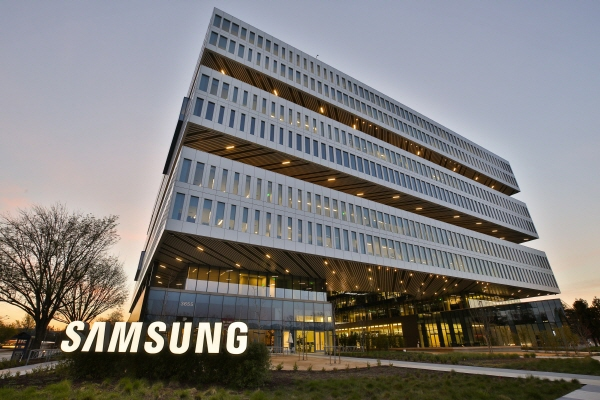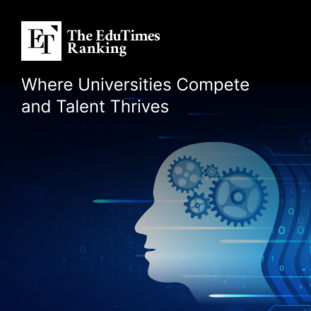Samsung’s Great Memory Shift: How CXL Could Rewrite the Semiconductor Playbook
Input
Modified
From Samsung’s perspective, shifting the industry focus to CXL is strategic. However the ecosystem is still in its infancy stage, so adoption remains limited. SK Hynix gears up to enter the CXL 2.0 market, but trails behind Samsung.

In the rapidly evolving landscape of high-performance computing and memory architecture, South Korea’s tech giants Samsung Electronics and SK hynix are engaged in an intense rivalry. While SK hynix has held the early advantage in High Bandwidth Memory (HBM)—especially with its strategic tie-up with NVIDIA—Samsung is aggressively pivoting toward Compute Express Link (CXL), a new memory interface standard poised to disrupt the existing memory ecosystem.
For Samsung, CXL is not just a new technology—it's a potential escape hatch from the dominant HBM narrative that currently favors its competitor. If the industry focus shifts decisively toward CXL, it could level the playing field or even hand Samsung a new leadership edge.
From Advantage to Vulnerability: Why HBM No Longer Guarantees Market Dominance
High Bandwidth Memory (HBM) is a type of high-speed RAM used primarily in AI, supercomputing, and advanced graphics. Its architecture stacks memory dies vertically to increase bandwidth and reduce power consumption, making it ideal for AI accelerators like NVIDIA’s GPUs. On the other hand, Compute Express Link (CXL) is an open standard interface designed to enhance memory coherence between CPUs and other devices such as GPUs, accelerators, and memory expanders. CXL enables pooled, shared, and expandable memory architectures—key features in next-generation data centers. While HBM is already commercialized and central to many AI chips, CXL represents the next frontier in redefining how memory is accessed and managed across an entire system.
According to analysis from MK News, Samsung views the CXL revolution as a strategic inflection point. “This is essentially Samsung’s way out,” said one industry expert. “If the industry shifts from HBM to CXL, SK hynix’s early-mover advantage disappears.” Samsung is betting that as AI workloads grow more complex and memory needs become more dynamic, the limitations of traditional, tightly-coupled memory structures like HBM will be exposed. In such a scenario, CXL—offering memory expansion, pooling, and heterogeneity—could become the industry standard.
Samsung has already poured significant resources into this direction. It was the first company to unveil CXL 1.1-based DRAM in 2022 and later announced the world’s first CXL 2.0 DRAM. This aggressive timeline signals Samsung's intent not just to participate but to lead the CXL market.
The Promise and the Problem: Why CXL Isn’t Mainstream—Yet
If CXL adoption accelerates, the ramifications could be profound. It's not just about memory—it’s about how the entire computing system operates.
“Once CXL gains real traction, it won’t just change how memory is managed—it will fundamentally alter how CPUs are used,” notes the Seoul Shinmun. “In fact, the entire hardware system ecosystem could undergo a massive transformation.”
In a CXL-powered environment, memory modules are decoupled from CPUs. This allows systems to allocate memory more efficiently, improve scalability, and reduce hardware costs. Traditional bottlenecks could be eliminated, and system architecture would shift from a CPU-centric to a memory-centric model.
This shift would disrupt existing chip and memory hierarchies, creating both risk and opportunity. With its vertical integration and early CXL deployments, Samsung is well-positioned to capitalize on such disruption.
While Samsung races ahead on CXL, SK hynix is not standing still. According to reporting from iNews24, SK hynix is preparing to enter the CXL 2.0 arena, marking its formal entry into this transformative space.
However, industry analysts point out that SK hynix still lags behind Samsung in terms of CXL readiness, ecosystem partnerships, and commercial product timelines.
“SK hynix is preparing its CXL 2.0 portfolio, but it’s still significantly trailing Samsung,” notes one expert. “HBM remains its stronghold, but CXL presents a challenge it cannot afford to ignore.”
This dynamic mirrors the broader strategic dilemma facing many memory players: how to balance investment in existing cash cows like HBM while preparing for disruptive platforms like CXL. Despite CXL's promise, the technology has not yet seen widespread adoption. One key reason is the ecosystem's immaturity.
As Digital Daily reports, CXL adoption faces hurdles, including a lack of standardization across hardware vendors, insufficient software support, particularly in memory management, and integration challenges in existing server and data center architectures.
“Since the ecosystem is not yet fully developed, adoption remains limited,” the report concludes. Nevertheless, cloud giants like Meta, Microsoft, and Google have all signaled interest in CXL for their hyperscale data centers. The UCIe (Universal Chiplet Interconnect Express) consortium, which includes Samsung and SK hynix, is also accelerating efforts to create a unified interconnect framework compatible with CXL. These developments suggest that while CXL may be early-stage, its momentum is undeniable.

A Race for Control: How Samsung and SK hynix Are Betting on Different Futures
Samsung’s strategic push toward CXL is also a defensive maneuver. In the HBM space, SK hynix has gained considerable ground, with NVIDIA selecting it as the primary supplier of HBM3 and HBM3E modules. This shift has implications not just for revenue but also for technological leadership in the AI era. CXL offers Samsung a new playing field where it can leverage its strengths in DRAM, NAND, and system integration to regain the upper hand.
By actively promoting CXL, Samsung aims to: reframe the competitive narrative away from HBM; expand its influence over next-gen memory standards; and build early alliances with server, CPU, and cloud vendors.
The company’s messaging at tech conferences and in press releases clearly positions it as the torchbearer for CXL adoption. The unfolding battle between HBM and CXL reveals deeper truths about the semiconductor industry:
- The AI boom is memory-hungry. Traditional architectures cannot keep up with the data intensity of LLMs, autonomous vehicles, and AI inference.
- Memory is no longer just about speed and capacity. It’s about flexibility, scalability, and coherence across heterogeneous systems.
- Control of memory standards will define platform leadership. Just as Intel once set the tone for CPUs, companies like Samsung and SK hynix are now vying to control the next wave of memory architecture.
The winner of the CXL race won’t just sell memory chips—it will shape the foundations of future computing. Samsung’s pivot to CXL marks a bold move to reclaim leadership in the evolving memory hierarchy. As the industry contemplates a post-HBM future, CXL offers a tantalizing vision of modular, pooled, and scalable memory systems that redefine how computers think and operate.
SK hynix, meanwhile, remains the HBM titan but is now investing to catch up in the CXL race. The outcome of this rivalry will reverberate through data centers, AI labs, and enterprise systems for years to come. The transition won’t happen overnight. But if Samsung’s bet pays off, it could emerge not just as a memory maker, but as the architect of the next computing paradigm.





















